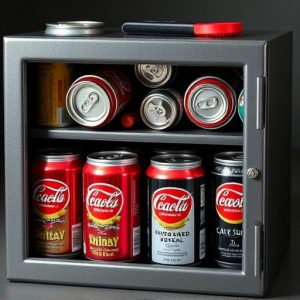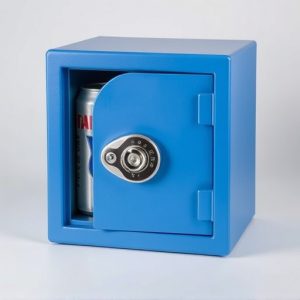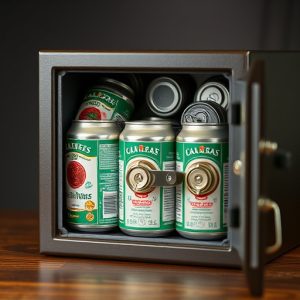Bathroom Cleaner Bottle Hiding Spot: Unveiling Innovative Counterfeit Protection
In today's digital era, consumer protection against counterfeit products has advanced with conc…….
In today's digital era, consumer protection against counterfeit products has advanced with concealed security measures hidden within everyday items like bathroom cleaner bottles. This innovative tactic includes integrated markers or codes that verify product authenticity upon closer inspection or using specialized devices, deterring counterfeiting attempts. By transforming mundane containers into strategic weapons, manufacturers ensure peace of mind for consumers and significantly enhance protection tactics, leveraging technology to safeguard valuable items discreetly, such as keys and sensitive documents, from prying eyes. The ongoing battle against counterfeit goods requires international cooperation, strict regulations, and continuous innovation in anti-counterfeit technologies like QR codes, holograms, and microprinting.
In today’s digital era, consumer protection against counterfeit products is a growing concern. This article explores a novel approach: concealed security solutions that hide within everyday items, such as the unassuming bathroom cleaner bottle. We delve into ‘The Bathroom Cleaner Bottle Hiding Spot’ as an innovative weapon against counterfeits, revealing how these hidden containers work from a technical perspective. Furthermore, we examine benefits and applications beyond high-value items, along with future implications in the ongoing battle against fake products.
- Understanding Concealed Security: A New Approach to Consumer Protection
- The Bathroom Cleaner Bottle Hiding Spot: Unveiling an Unlikely Weapon Against Counterfeits
- How Do These Hidden Containers Work? A Technical Perspective
- Benefits and Applications: Beyond Protecting High-Value Items
- Future Implications and Challenges in the Fight Against Fake Products
Understanding Concealed Security: A New Approach to Consumer Protection
In today’s digital era, consumer protection has evolved beyond traditional means. One innovative approach gaining traction is concealed security—a new strategy to safeguard consumers from counterfeit and hazardous products. This method involves integrating protective measures directly into everyday items, like a seemingly ordinary bathroom cleaner bottle. By hiding these security features within common household containers, manufacturers create an unexpected layer of defense against counterfeiting and ensure product authenticity.
Imagine a scenario where a customer purchases what appears to be their regular bathroom cleaner but, upon closer inspection or through a specialized device, discovers hidden markers or codes that verify the product’s legitimacy. This simple yet effective tactic can deter counterfeiters from producing and distributing knock-off goods, providing consumers with peace of mind. The concept of hiding security in plain sight, like placing a secret code within a bathroom cleaner bottle, represents a significant shift in consumer protection, making it more accessible and subtle than ever before.
The Bathroom Cleaner Bottle Hiding Spot: Unveiling an Unlikely Weapon Against Counterfeits
In the realm of consumer product security, an unlikely weapon against counterfeits has emerged from the most mundane of places—the bathroom cleaner bottle hiding spot. This strategy leverages everyday items to conceal security features, making it harder for counterfeiters to replicate genuine products. By integrating security measures within commonly used containers like bathroom cleaner bottles, manufacturers create an extra layer of protection that can be easily overlooked by those looking to manufacture knock-offs.
The concept is simple yet ingenious: by placing a unique identifier or authentication code inside the bottle, accessible only when certain conditions are met, consumers can verify the product’s authenticity with a quick glance or a simple scan. This bathroom cleaner bottle hiding spot serves as a subtle yet powerful tool, ensuring that even if counterfeiters manage to duplicate the external appearance, they would struggle to replicate the internal security features designed to protect against counterfeiting.
How Do These Hidden Containers Work? A Technical Perspective
Hidden security containers, often disguised as everyday consumer products like a bathroom cleaner bottle, utilize innovative technology to safeguard valuables from theft or unauthorized access. These devices typically incorporate advanced mechanisms that allow for discrete storage and quick retrieval of items. At their core, they function with a combination of locking systems, magnetic sensors, and microprocessors. When activated, the container seals itself, securing its contents within.
From a technical perspective, these hidden containers often employ biometric authentication, such as fingerprint scanners, to ensure only authorized users can access the interior. Advanced encryption algorithms safeguard stored data, making it nearly impossible for unauthorized individuals to gain access. Furthermore, some models incorporate GPS tracking features that enable real-time location monitoring of the container itself, providing an additional layer of security and peace of mind.
Benefits and Applications: Beyond Protecting High-Value Items
Hidden security containers offer more than just protection for high-value items; they provide a versatile solution for various everyday scenarios. One such application could be using an empty bathroom cleaner bottle as a hiding spot in your home or office. This simple, yet effective, method can discreetly store small valuables like keys, cash, or even emergency medications out of sight and reach.
The benefits extend to sensitive documents or personal items needing temporary stowing away. For instance, a quick-access bathroom cleaner bottle could serve as a secure location for important papers during a move or renovation, ensuring their safety from prying eyes. This innovative approach leverages everyday objects, making security measures seamlessly integrate into daily routines and environments, including hidden storage in plain sight like your standard bathroom cleaner bottle.
Future Implications and Challenges in the Fight Against Fake Products
As technology advances, so do methods in countering the global issue of counterfeit goods. While concealed security features like the innovative bathroom cleaner bottle hiding spot offer significant progress, challenges remain. Future implications suggest an increased reliance on sophisticated authentication methods, such as advanced QR codes, holograms, and microprinting, integrated directly into product packaging to deter counterfeiting.
The fight against fake products is an ongoing battle. As genuine manufacturers invest in these security measures, counterfeiters will be prompted to adapt their tactics, leading to a cat-and-mouse game. Addressing this challenge requires international collaboration, stringent regulation, and continued innovation in anti-counterfeit technology, ensuring consumers receive authentic products, especially in high-risk sectors like healthcare and household goods, including that of the bathroom cleaner bottle hiding spot.
The concealed security fake consumer product container, as exemplified by the bathroom cleaner bottle hiding spot, represents a significant advancement in consumer protection. By integrating hidden storage and authentication features, this innovative approach disrupts counterfeiters’ strategies. As technology evolves, these solutions will play a pivotal role in safeguarding products across various industries. Further research and collaboration between manufacturers, regulatory bodies, and consumers are crucial to address ongoing challenges and ensure the effectiveness of these measures in the digital age.


